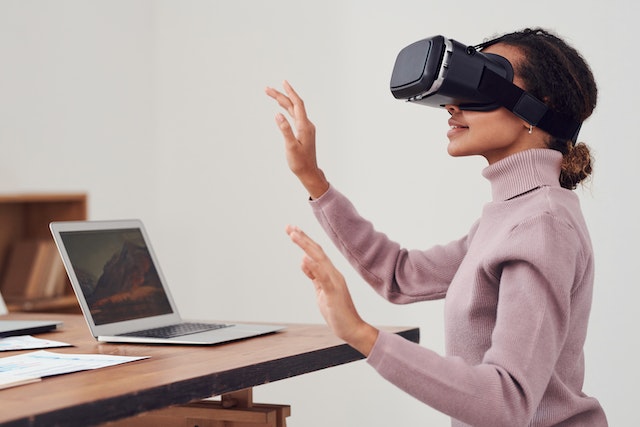
GUEST POST from Chateau G Pato
Augmented and virtual reality (AR/VR) are rapidly advancing technologies that are transforming the world around us. AR and VR technology has been used in a variety of areas, ranging from entertainment and gaming to medical and military applications. As AR and VR become more widely available and affordable, the potential ways they could be integrated into our daily lives continues to grow. With these changes, it is becoming increasingly important to explore how this technology will affect our lives and how we can leverage it for the better.
One potential area of AR and VR use is in medicine. AR and VR could be used in medical training, allowing medical professionals to gain more immersive experiences with anatomy and other medical procedures. On the patient side, AR and VR could be used to provide a more interactive and immersive experience with medical care and consulting. This could even be extended to allow those who are unable to physically be present for medical appointments to participate and become involved in their own medical care.
Another application could be in education. Currently, many educational institutions are already leveraging AR and VR tools to add a more interactive learning experience for their students. From early education to higher education, incorporating AR/VR technology could bring classes to life and give students the opportunity to truly explore their interests in a more immersive way.
Case Study 1
One example of AR and VR being used in both medical and educational applications is the application of Microsoft HoloLens in the medical field. HoloLens is a head-mounted display that uses both AR and VR technology to project an interactive 3D experience into the real world. It has been used in numerous medical and educational settings, such as medical imaging and microscopic exoplanet exploration. HoloLens has also been used in the medical field for students to “intern” with a physician, allowing them to observe and experience a real-world medical procedure.
Case Study 2
The use of AR and VR technology is also being explored for use in the military. A scientist at the Naval Surface Warfare Center has developed a Virtual Reality Battle Lab (VRBL), which is a training platform designed to simulate a battlefield environment in order to more accurately train warriors for defense. The lab uses a range of applications, such as AR and VR goggles, robotics, virtual reality systems, and even live-fire ranges. This technology could be used to help the military better prepare and respond to threats, as well as provide soldiers and personnel with more interactive and immersive scenarios for training and mission planning.
Conclusion
Overall, AR and VR technology have the potential to greatly enhance our lives by providing us with new opportunities and experiences. From medical and educational settings to military scenarios, we can see the potential for AR and VR technology to revolutionize how we interact with the world around us. As this technology becomes increasingly available and affordable, it will be interesting to see what new and exciting ways it will be used in our lives.
Bottom line: Futurology is not fortune telling. Futurists use a scientific approach to create their deliverables, but a methodology and tools like those in FutureHacking™ can empower anyone to engage in futurology themselves.
Image credit: Pexels
![]() Sign up here to join 17,000+ leaders getting Human-Centered Change & Innovation Weekly delivered to their inbox every week.
Sign up here to join 17,000+ leaders getting Human-Centered Change & Innovation Weekly delivered to their inbox every week.